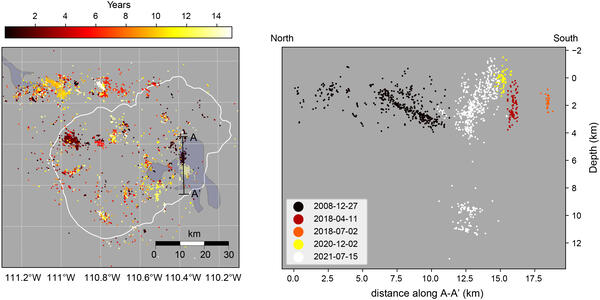Yellowstone Caldera Chronicles is a weekly column written by scientists and collaborators of the Yellowstone Volcano Observatory. This week’s contribution is from David Shelly, seismologist with the U.S. Geological Survey.
The Yellowstone region…

Yellowstone Caldera Chronicles is a weekly column written by scientists and collaborators of the Yellowstone Volcano Observatory. This week’s contribution is from David Shelly, seismologist with the U.S. Geological Survey.
The Yellowstone region…